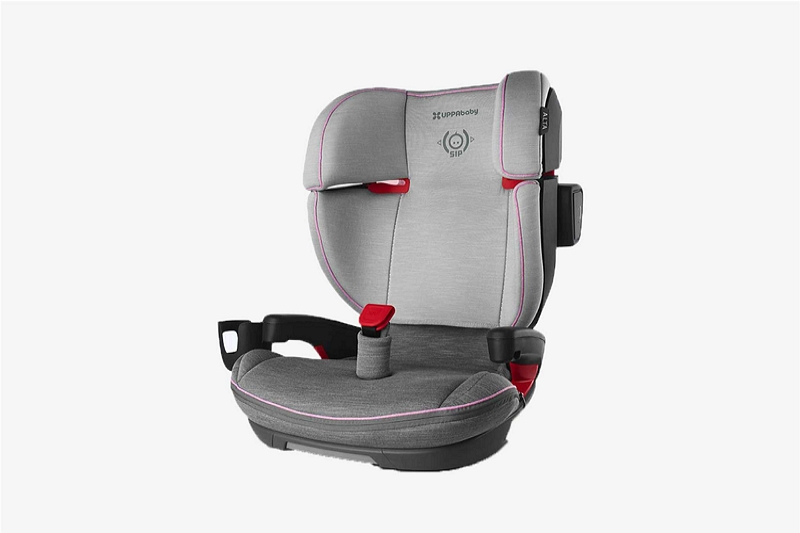What is the weight requirement for a booster seat in California? This can be a tough question to answer if you aren’t sure what you should lookup. In this blog post, we will discuss what each type of booster seat requires and what items are exempt from the law.

Weight Requirement For A Booster Seat In California
A booster seat is a special car safety harness that helps children travel more safely. It raises the child up so an adult seat belt fits correctly on them, which prevents injury in case of accidents or sudden stops. Booster seats are not required by law for all ages and sizes of children
In California, a child must be at least 40 pounds before he or she can ride in a booster seat.
When Can A Child Use A Booster Seat In California?
A child can use a booster seat in California until they are at least 40 pounds and between four and eight years old. Children under the age of eight must be restrained in an appropriate child safety seat or booster seat when riding anywhere other than their home.
If it is not possible for them to ride safely seated by themselves, such as if there’s more than one young passenger on the backseat, then they need to have some form of restraint system that can properly protect them from harm during normal driving conditions.
A person may also violate this law if an unsecured infant who isn’t properly secured uses a shoulder strap without having any type of forward-facing harness attached behind his/her back because lack of proper restraining systems can lead to serious injuries or even death.
What Height And Weight Does A Child Need To Be For A Booster Seat?
Booster seats are a must-have if you have older children. The law states that your child should be 57 inches tall and 80 lbs before she can use the regular seat belt as it is meant to fit an adult.
Typically, kids will need booster seats until they weigh 100-120lbs or reach age 12 depending on height. So a child under the age of 13 years and less than 57 inches tall (145 cm) needs to use a booster seat.
What Are The Height And Weight Requirements For A Backless Booster Seat?
Children should be at least 57 inches tall and weigh between 80 and 100 lbs. before transitioning from a harnessed car seat to a backless booster seat, according to the American Academy of Pediatrics (AAP).
What Is The Age And Weight Requirement For A Booster Seat In Illinois?
Age and weight requirements for a booster seat in Illinois are determined by the child’s age. The American Academy of Pediatrics has developed guidelines to help parents choose appropriate seats for their children.
For example, if your child is under 40 pounds they should be secured in an infant car seat with harness straps until at least one year old or when they reach 20 pounds, whichever comes first.
If that same child hits the 40-pound mark before his/her second birthday then he/she can move into a forward-facing convertible car seat but must stay there until he/she reaches either four years old or weighs between 50 to 80 pounds (whichever happens sooner).
At this point moving them up to a belt-positioning booster would be best while still keeping them in a forward-facing car seat. Once they turn eight years old or weigh 80 pounds their weight and height make it necessary to graduate from the booster seat into a full-sized adult safety belt.
What Are The Requirements For A Booster Seat In Texas?
Every person under the age of eight should ride in a booster seat. Texas law requires children younger than eight to be properly secured and seated by: A safety belt if they are four feet nine inches or taller; or A child passenger restraint system that meets federal standards if they are at least four feet two inches tall but shorter than four feet nine inches.
This includes car seats, high-back boosters, harness pads for LATCH-equipped convertible seats (unless the vehicle manufacturer provides shoulder belts), combination lap/shoulder belts with attachments to prevent the forward motion of an occupant’s upper torso during a crash event, and other devices certified as providing protection comparable to a Type II seat belt assembly installed using LATCH.
Is Backless Booster Seat Safe?
Children are very valuable to parents. It is important to provide them with the best care possible. One way of doing this can be by purchasing a backless booster seat for your child, as opposed to other more expensive options which support their head and neck during driving. This type of car seat might seem like it would not offer much protection but they actually do.
Parents who have used these types before swear that they work just fine when compared to conventional seats. They believe that because children sit up higher in this kind of seat, thus allowing them to see out better than if they were sitting down lower on one where their necks rest against something solid, therefore giving them reason enough to think it’s safe too.
However, experts warn against using such a seat, and state that it is important to follow the manufacturer’s instructions.
Also, parents must make sure that their child sits in a proper position while using this kind of booster seat because children can still injure themselves even though their head does not rest against anything solid.
